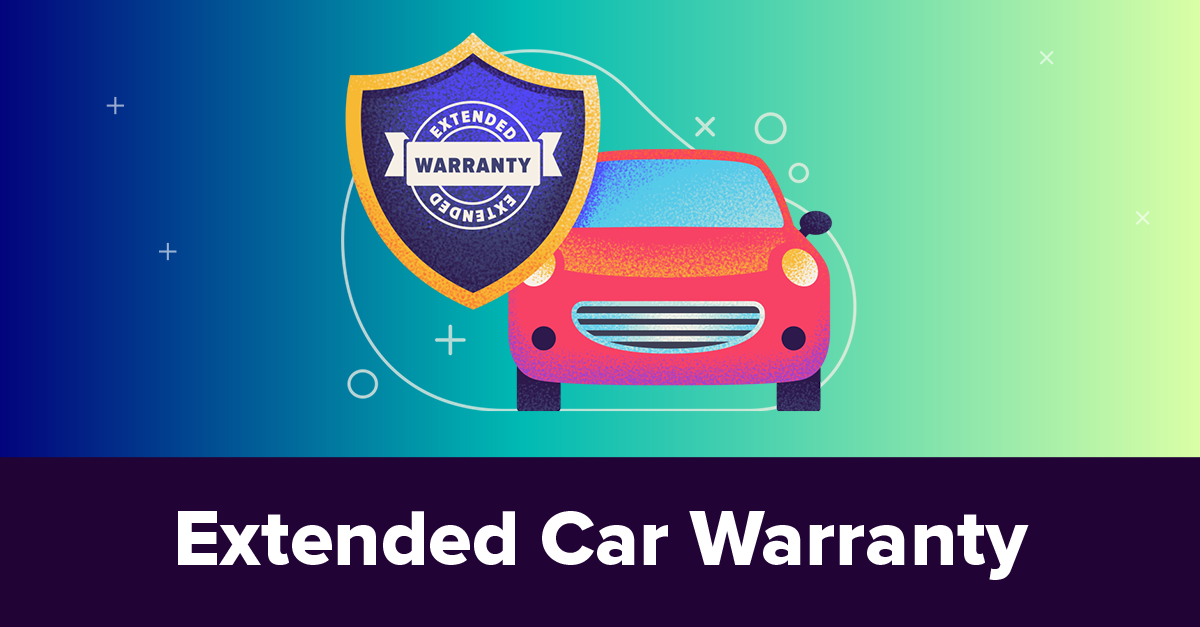Brand New Car Warranty: Your Comprehensive Guide to Peace of Mind on Wheels
Brand New Car Warranty: Your Comprehensive Guide to Peace of Mind on Wheels cars.truckstrend.com
Purchasing a brand new car is an exciting milestone, often representing a significant investment and a symbol of freedom. Yet, beneath the gleaming paint and the intoxicating new car smell lies a crucial, often overlooked, layer of protection: the Brand New Car Warranty. Far more than just a piece of paper, this warranty is your shield against unexpected repair costs, a testament to the manufacturer’s confidence in their product, and a cornerstone of your peace of mind for years to come.
In essence, a brand new car warranty is a legal guarantee from the vehicle manufacturer to repair or replace defects in materials or workmanship that occur within a specified period or mileage limit, whichever comes first. It’s designed to protect buyers from issues that are a result of manufacturing errors, not normal wear and tear or owner negligence. Understanding the nuances of this warranty is paramount, as it empowers you to protect your investment, ensure your vehicle’s longevity, and navigate potential issues with confidence. This comprehensive guide will demystify the brand new car warranty, exploring its various facets, benefits, and how to make the most of this invaluable protection.
Brand New Car Warranty: Your Comprehensive Guide to Peace of Mind on Wheels
What Exactly is a Brand New Car Warranty?
At its core, a brand new car warranty is a contractual promise from the automaker. When you drive a new vehicle off the lot, it comes with an implicit assurance that it’s free from defects and will perform as intended for a reasonable period. The warranty formalizes this assurance, outlining specific terms, conditions, and coverage limits. It’s an integral part of the vehicle’s purchase price, providing a financial safety net against the high cost of unforeseen mechanical or electrical failures attributable to the manufacturing process.
Think of it as an insurance policy for your car’s inherent quality. Should a covered component fail due to a defect during the warranty period, the manufacturer, through its authorized dealerships, is obligated to repair or replace it at no cost to you. This protection covers a wide array of parts and systems, ensuring that your initial investment is safeguarded against unexpected manufacturing flaws.
Types of Brand New Car Warranties
While often referred to singularly, a new car warranty is typically a bundle of different coverage types, each addressing specific components or issues. Understanding these distinctions is key to knowing what’s covered:
-
Bumper-to-Bumper Warranty (Comprehensive Warranty): This is the most extensive coverage, often lasting 3 years/36,000 miles or 4 years/50,000 miles (whichever comes first). It covers almost all components of the vehicle, from electrical systems to air conditioning, infotainment, and minor mechanical parts, excluding only a specific list of "wear and tear" items or maintenance parts. It’s called "bumper-to-bumper" because it essentially covers everything in between.
-
Powertrain Warranty: This warranty focuses on the most critical and expensive components of your vehicle: the engine, transmission, and drivetrain (which includes the axles, driveshaft, and differentials). It typically lasts longer than the bumper-to-bumper warranty, often 5 years/60,000 miles or even 10 years/100,000 miles, reflecting the higher cost of repairing these vital systems.

-
Corrosion/Rust-Through Warranty: This coverage protects against rust that perforates the vehicle’s body panels, originating from the inside out. Surface rust or rust caused by external factors (like scratches or chips) is usually not covered. These warranties often last significantly longer, sometimes up to 5 or 7 years with unlimited mileage.

Roadside Assistance: Many new car warranties include a period of complimentary roadside assistance, which can be invaluable for unexpected breakdowns, flat tires, battery jumps, or fuel delivery. This typically aligns with the bumper-to-bumper warranty duration.
-
Emissions Warranty: Mandated by federal law, this warranty covers components related to the vehicle’s emissions control system (e.g., catalytic converter, oxygen sensors). These often have varying durations, with some critical components covered for up to 8 years/80,000 miles.
-
Hybrid/EV Battery Warranty: Given the high cost and specialized nature of electric vehicle (EV) and hybrid batteries, most manufacturers offer a dedicated, longer warranty for these components, often 8 years/100,000 miles or even 10 years/150,000 miles, depending on the state or manufacturer.

What’s Typically Covered and What’s Not?
Understanding the scope of your warranty is crucial. While a new car warranty offers broad protection, it’s not an all-encompassing shield against every possible issue.
Typically Covered:
- Manufacturing Defects: Any component that fails due to a flaw in its design, material, or assembly process.
- Major Mechanical Components: Engine, transmission, drivetrain (covered under powertrain warranty).
- Electrical Systems: Wiring, sensors, modules, infotainment system components, power windows, etc.
- HVAC System: Air conditioning compressor, condenser, heater core.
- Steering and Suspension Components: Power steering pump, steering rack, control arms (if defective).
Typically Not Covered:
- Wear and Tear Items: Components that naturally degrade with use, such as tires, brake pads and rotors, wiper blades, light bulbs, clutches, and spark plugs.
- Routine Maintenance: Oil changes, tire rotations, fluid checks, filter replacements, and scheduled inspections. These are the owner’s responsibility.
- Damage from Accidents or Misuse: Collisions, improper fluid usage, racing, off-roading (unless designed for it), or operating the vehicle against manufacturer guidelines.
- Aftermarket Modifications: Damage caused by non-factory installed parts or modifications that alter the vehicle’s original design or function.
- Environmental Damage: Damage from natural disasters (floods, hail), acts of vandalism, or neglect.
- Lack of Maintenance: Failure to follow the manufacturer’s recommended service schedule can void certain warranty claims.
Benefits of a Brand New Car Warranty
The advantages of having a comprehensive new car warranty extend beyond simple repairs:
- Financial Protection: This is the most significant benefit. Modern vehicle repairs can be incredibly expensive. A warranty can save you thousands of dollars in unexpected costs, especially for major components.
- Peace of Mind: Knowing that the manufacturer stands behind their product allows you to enjoy your new car without constant worry about potential defects or costly repairs.
- Enhanced Resale Value: A vehicle still under its original factory warranty can be a significant selling point in the used car market, reassuring potential buyers about the car’s condition and reducing their immediate financial risk.
- Access to Certified Technicians and Parts: Warranty repairs must be performed by authorized dealerships using genuine manufacturer parts. This ensures high-quality repairs by technicians specifically trained on your vehicle’s make and model.
- Trust and Reliability: A strong warranty signals the manufacturer’s confidence in their vehicle’s quality and durability.
Understanding Warranty Terms: Mileage, Duration, and Exclusions
Every warranty comes with specific terms and conditions. The two primary limits are duration (years) and mileage, with coverage ending at whichever threshold is reached first. For example, a "3-year/36,000-mile" warranty expires after three years OR when the odometer hits 36,000 miles, even if it’s within the first year.
Key Terms to Understand:
- Effective Date: The date the warranty coverage begins, usually the date of purchase or vehicle registration.
- Transferability: Most original new car warranties are transferable to subsequent owners, which significantly boosts resale value. Always confirm this in your warranty booklet.
- Voiding the Warranty: Certain actions can void your warranty. These commonly include:
- Improper Maintenance: Failing to adhere to the manufacturer’s recommended service schedule.
- Aftermarket Modifications: Installing non-approved parts or making significant alterations that lead to a component failure.
- Abuse or Neglect: Racing, overloading, off-roading (if not designed for it), or severe neglect.
- Salvage Vehicles with a salvage title typically have their warranties voided.
How to Utilize Your Warranty
Making a warranty claim is straightforward if you follow the proper procedures:
- Read Your Warranty Booklet: This is your primary resource. It contains all the specific details, coverage limits, exclusions, and instructions.
- Follow the Maintenance Schedule: Adhere strictly to the manufacturer’s recommended service intervals. Keep detailed records and receipts for all maintenance performed, whether by a dealership or an independent shop. This is crucial for proving you’ve maintained the vehicle properly.
- Identify the Problem: As soon as you notice an issue that you believe is a defect, note down the symptoms.
- Locate an Authorized Service Center: Warranty repairs must be performed by an authorized dealership for your vehicle’s make.
- Schedule an Appointment: Explain the problem clearly to the service advisor.
- Provide Documentation: Bring your vehicle’s service records and any other relevant documentation.
Common Pitfalls and How to Avoid Them
Even with a strong warranty, missteps can lead to denied claims:
- Not Understanding the Fine Print: Don’t assume. Read your warranty booklet thoroughly.
- Skipping or Delaying Maintenance: This is a common reason for denied claims. Regular maintenance is not just good for your car; it’s a warranty requirement.
- Unauthorized Repairs or Aftermarket Parts: Having repairs done by non-authorized shops or installing aftermarket parts that cause a failure can void coverage for related components.
- Ignoring Warning Lights: Address issues promptly. Delaying a repair can worsen the problem and potentially be seen as owner neglect.
- Losing Records: Keep all service receipts and repair orders organized.
Extending Your Warranty: Is It Worth It?
Once your factory warranty expires, you might consider an extended warranty. These come in two main forms:
- Manufacturer-Backed Extended Warranties: Offered by the carmaker, these are essentially an extension of your original warranty, offering similar coverage and requiring dealership service. They are generally more reliable but often more expensive.
- Third-Party Extended Warranties: Offered by independent companies, these vary widely in terms of coverage, cost, and reliability. Research thoroughly before purchasing one, as some can have significant limitations or complex claim processes.
The decision to purchase an extended warranty depends on your risk tolerance, the car’s predicted reliability, and your financial situation. For some, the continued peace of mind is worth the cost, especially for complex or high-tech vehicles.
Typical Brand New Car Warranty Coverage Examples
The initial "Brand New Car Warranty" is included in the vehicle’s purchase price. The table below illustrates typical durations and mileage limits for various components across different vehicle categories. These are general examples, and specific terms vary by manufacturer and model. Always consult your vehicle’s warranty booklet for precise details.
| Coverage Type | Mainstream Brands (e.g., Toyota, Honda, Ford, Chevy) | Luxury Brands (e.g., BMW, Mercedes-Benz, Audi, Lexus) | Hybrid/EV Specific (e.g., Tesla, Hyundai Ioniq, Chevy Bolt) |
|---|---|---|---|
| Bumper-to-Bumper | 3 years / 36,000 miles | 4 years / 50,000 miles | 3-4 years / 36,000-50,000 miles |
| Powertrain | 5 years / 60,000 miles | 4 years / 50,000 miles (often aligns with Bumper-to-Bumper) | 5 years / 60,000 miles |
| Corrosion/Rust-Through | 5 years / Unlimited miles | 5-7 years / Unlimited miles | 5-7 years / Unlimited miles |
| Roadside Assistance | 3 years / 36,000 miles | 4 years / 50,000 miles | 3-5 years / 36,000-60,000 miles |
| Emissions | 8 years / 80,000 miles (federally mandated components) | 8 years / 80,000 miles | 8 years / 80,000 miles |
| Hybrid/EV Battery | N/A | N/A | 8 years / 100,000-150,000 miles (or 10 years / 150,000 miles in some states) |
| Notes | Whichever comes first for all limits. Some offer longer powertrain. | Comprehensive but slightly shorter overall terms. | Dedicated, long battery warranties are standard. |
Frequently Asked Questions (FAQ)
Q1: Is the new car warranty transferable to a second owner?
A1: Most original manufacturer new car warranties are fully transferable to subsequent owners, which can significantly enhance the vehicle’s resale value. However, always confirm this in your specific warranty booklet.
Q2: Does routine maintenance void the warranty?
A2: No, routine maintenance does not void the warranty. In fact, following the manufacturer’s recommended maintenance schedule is often a condition of the warranty. Failing to perform scheduled maintenance can lead to denied claims if the failure is linked to the lack of maintenance.
Q3: Can I use an independent mechanic for service without voiding my warranty?
A3: Yes, you can. The Magnuson-Moss Warranty Act protects consumers’ rights to choose where they have their vehicle serviced. However, the work must be performed correctly, and you must keep detailed records (receipts, dates, mileage) of all maintenance. If a problem arises, the burden of proof is on the manufacturer to show that the independent repair caused the defect. For warranty repairs, however, you must use an authorized dealership.
Q4: What’s the difference between a new car warranty and an extended warranty?
A4: A new car warranty (factory warranty) comes with the purchase of a new vehicle and is included in its price. An extended warranty is an additional service contract purchased separately, either from the manufacturer or a third party, to provide coverage after the factory warranty expires.
Q5: What if my car breaks down far from home?
A5: Most new car warranties include roadside assistance, which can help with towing to the nearest authorized dealership. If a covered repair is needed, any authorized dealership for your vehicle’s make should be able to perform the warranty work, regardless of where you purchased the car.
Q6: Does a warranty cover wear and tear items like tires or brakes?
A6: Generally, no. Wear and tear items, which naturally degrade with use (e.g., tires, brake pads, wiper blades, light bulbs), are typically excluded from new car warranties. Tires usually come with a separate warranty from the tire manufacturer.
Conclusion
A brand new car warranty is an invaluable component of your vehicle purchase, offering critical financial protection and genuine peace of mind. It’s a testament to the manufacturer’s commitment to quality and a safeguard against the unexpected. By understanding the types of coverage, what’s included and excluded, and how to properly utilize and maintain your vehicle, you can maximize the benefits of this essential protection. Don’t view your warranty as a mere formality; embrace it as a vital guide to responsible car ownership, ensuring your brand new vehicle delivers years of reliable performance and driving pleasure. Always read your warranty booklet thoroughly, maintain meticulous service records, and address any potential issues promptly to fully leverage this cornerstone of new car ownership.




